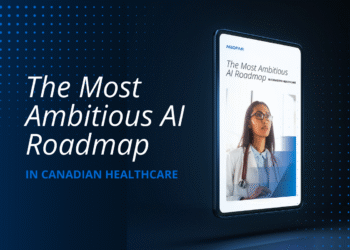From boosting daily throughput to eliminating after-hours charting and restoring clinician well-being, the numbers and stories ahead show why embedding AI into the EMR is no longer optional. It is essential.
Time to Revenue: Turn Saved Time into Billable Care
When AI is built into the EMR, seamlessly and intelligently, it does more than save time. It consistently increases revenue without adding more hours to the schedule. With documentation complete before the next patient walks in, B.C. clinics using CareWay are seeing immediate, measurable financial gains:
- 15% increase in patients seen per day, on average¹
- $200–$300 more in daily revenue, adding up to as much as $50K per year per full-time physician (based on B.C.’s average billing per visit under the LFP model)¹, 4
The results are consistent. AI doesn’t just help you move faster, it helps you extract more value from the time you are already spending. If growing your availability and patient panel feels out of reach, documentation is often the invisible barrier.
Often, it is not the time spent with patients that limits capacity, it is the time lost to documentation and follow-up. When the right native AI removes that barrier, physicians stay on time, open space for more visits, and grow their patient panel without extending their day.
Workflow Efficiency: Reclaim the Hours You Never Counted
Your evenings were not meant for endless charting. They were meant for rest, family, and recharging for the patients who count on you tomorrow.Built-in AI ends that cycle by capturing clinical insights instantly, accurately, and directly within your existing EMR workflow, without adding extra layers or systems.
In B.C. clinics using CareWay and MYLE, the results are substantial: Physicians save up to 3 hours per day¹ previously lost to documentation.
Across both B.C. clinics and national evaluations, the source of these gains is clear:
- Notes are captured in real time, during the visit
- Post-visit documentation is reduced or eliminated
- Bilingual note accuracy improves, requiring fewer manual corrections
The result is hundreds of hours returned to physicians, hours that were lost between appointments, during lunch breaks, or late at night.
👉 You may also find this article interesting: How 350+ B.C. physicians are shaping the next generation of AI-powered EMRs.
Cognitive Load and Well-Being Protect: Your Team from Burnout Before it Starts
Clinical documentation does more than consume time, it drains focus, mental bandwidth, and, over time, the motivation to continue practicing. In many clinics, the cumulative weight of after-hours charting has become one of the most significant threats to long-term physician retention.
According to a 2025 physician survey by the Peterson Health Technology Institute (PHTI)², 62% of clinicians said reduced administrative burden made them more likely to extend their clinical careers³. Every hour saved, every chart completed during clinic hours, every reduction in burnout risk is a retention tool. CareWay’s embedded AI protects and restores the mental bandwidth your entire care team needs to thrive.
In 2025, every CareWay user surveyed reported a positive impact on their mental fatigue. This matches broader North American trends documented by the PHTI study², ³, which found:
- 40-60% reduction in burnout
- 61% decrease in cognitive load
- 94% of clinicians say AI scribes help them focus on their patients
- 70% report improved work-life balance after adopting AI scribes
The benefits go far beyond individual well-being. Clinics that reduce after-hours documentation lower the risk of physician attrition, mid-career retirement, or burnout-related absences, and the gradual erosion of clinical empathy. In Canada, replacing a physician can take 6–18 months5, delays that directly impact patient care as many often take >1 year to reattach to a new physician6.
When physicians reconnect with why they chose medicine, the benefits ripple outward. Patients notice. With CareWay, they describe calmer clinics, more focused encounters, and a renewed sense of trust in their care teams.
Get the full report
Sources
1. MEDFAR internal analysis (2023-2025). Composite “typical physician” model from anonymized observations; indicative results, variation by practice setting.
2. OntarioMD, “Transforming Primary Care with AI” https://www.ontariomd.ca/pages/transforming-primary-care-with-ai.aspx
3. PHTI, 2025. “Adoption of AI in Healthcare Delivery Systems: Early Applications and Impacts.” https://phti.org/wp-content/uploads/sites/3/2025/03/PHTI-Adoption-of-AI-in-Healthcare-Delivery-Systems-Early-Applications-Impacts.pdf
4. Canadian Medical Association (CMA), May 2024. Why is it so hard to find a family doctor?” https://www.cma.ca/healthcare-for-real/why-it-so-hard-find-family-doctor#:~:text=More%20than%20one%20in%20five,nurse%20practitioner%20they%20see%20regularly
7. How much do family physicians make in Canada? MD Financial Management. https://invested.mdm.ca/how-much-do-family-physicians-make-in-canada
8. Recruiting a Permanent Physician: Best Practices for the Group Practitioner. Richmond Division of Family Practice (quoting Health Match BC). https://divisionsbc.ca/sites/default/files/Divisions/Richmond/Group_Recruiting%20Permanent%20Physician%20Best%20Practices.pdf







